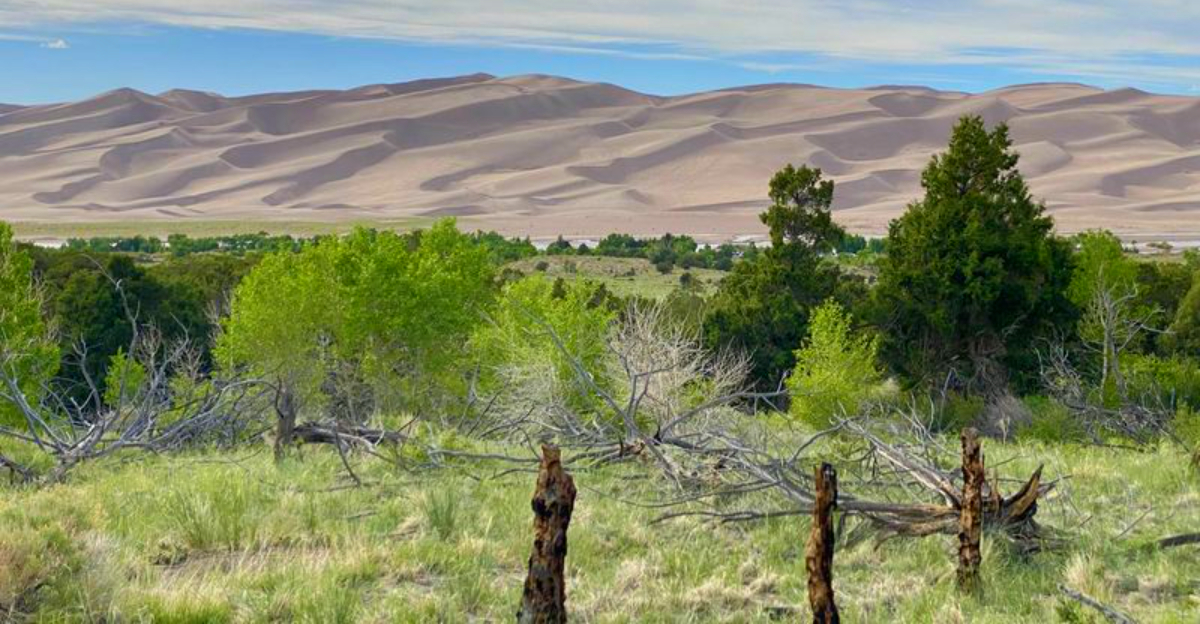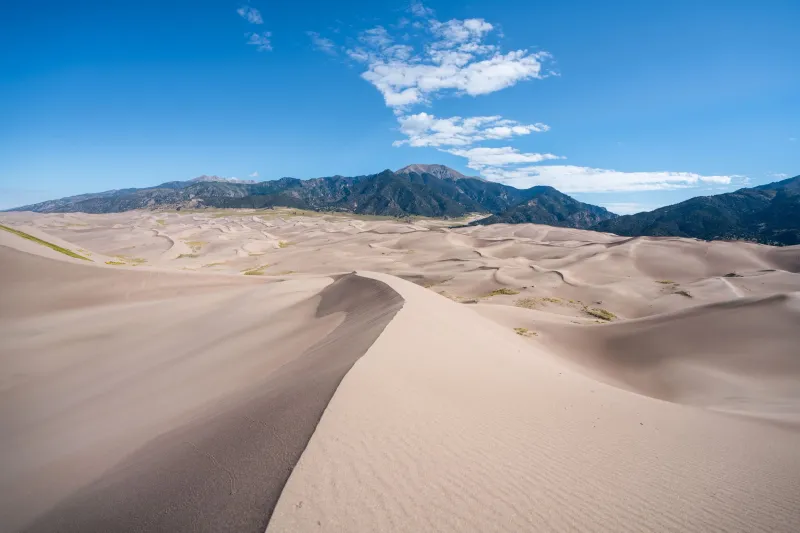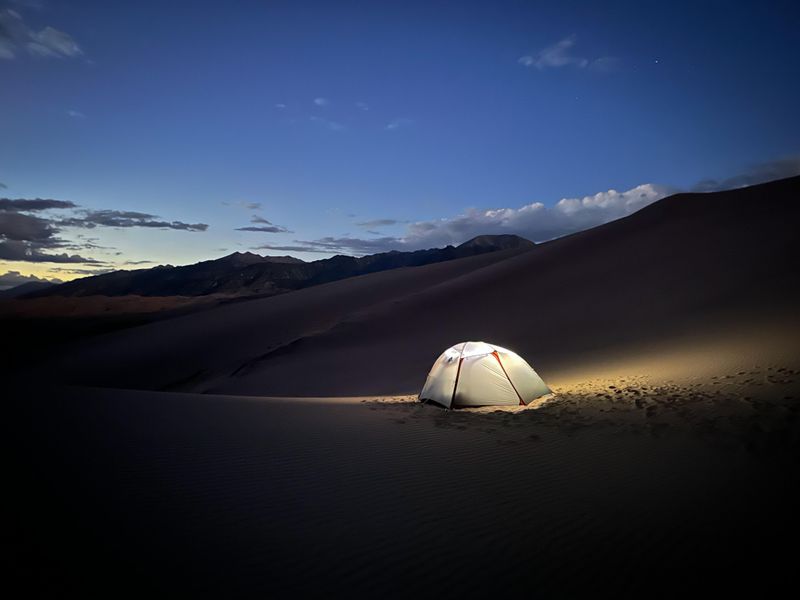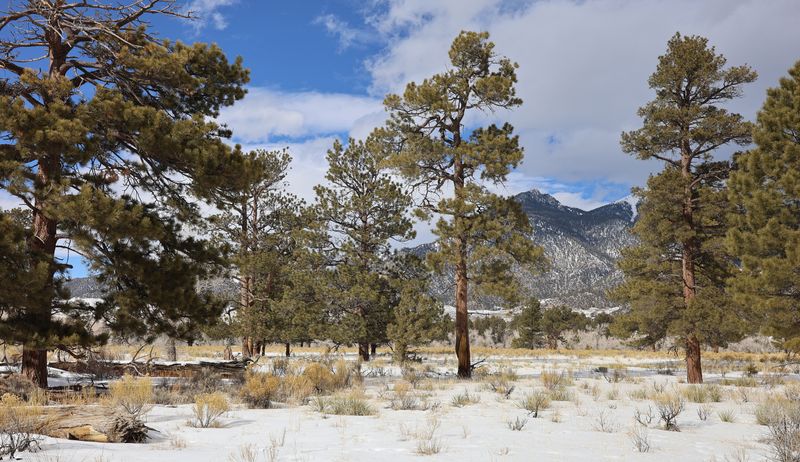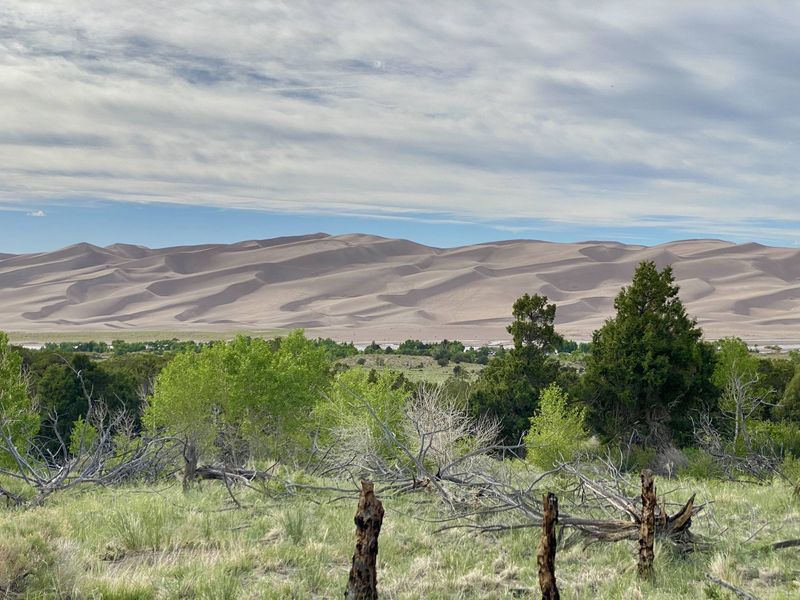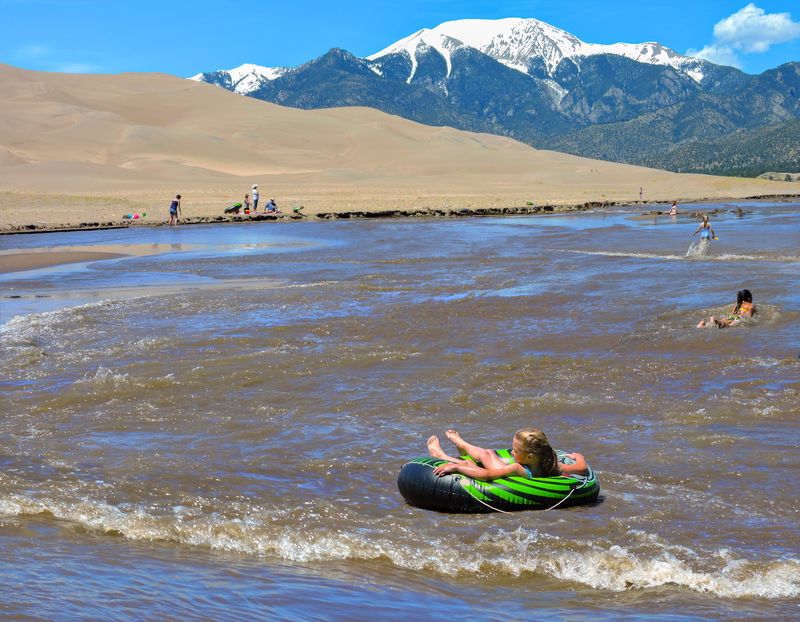Great Sand Dunes National Park is famous for its massive hills of sand, but most tourists stick to the same crowded trails and popular viewpoints. What if you could explore secret corners where the crowds disappear and nature feels untouched? Locals know about these hidden gems but rarely share them with outsiders, hoping to keep the magic alive for themselves.
1. Hidden Dune
Tucked deeper into the dunefield than most visitors ever venture, this dune earned its name honestly. While everyone flocks to High Dune or Star Dune, Hidden Dune waits in peaceful silence.
Getting there requires starting from the Point of No Return along Medano Pass Primitive Road. You’ll follow sandy ridgelines and washes that aren’t marked on most maps. The route isn’t obvious, which keeps crowds away.
What makes the journey worthwhile? Absolute solitude. The sand patterns remain undisturbed by footprints, and the silence feels almost magical. You might spend hours here without seeing another soul, surrounded only by wind-sculpted dunes.
2. Backcountry Dune Camping Past the High Ridge
Most day-trippers never make it past the first high ridge, but that’s where the real adventure begins. Push west about 1.5 miles from the main day-use zone, and you’ll enter the Dunes Backcountry.
Camping is allowed here with a permit from Recreation.gov. There are no facilities, no trails, and definitely no crowds. Just you, the sand, and an ocean of stars overhead.
Nights out here feel otherworldly. The silence is so complete you can hear your own heartbeat. Stargazing becomes unforgettable when there’s zero light pollution. Locals treasure these spots for the sense of total isolation they provide.
3. Indian Grove and Sand Ramp Trail Campsites
Not every hidden treasure lies buried in sand. Indian Grove offers a completely different experience—a mature stand of ponderosa pines that doubles as an archaeological site.
The Sand Ramp Trail winds through this area, skirting the north and east edges of the dunefield. It passes through forests, flats, and dune fringes, with designated backcountry campsites scattered along the route. Most visitors never consider hiking here because they’re fixated on the dunes.
From the trail, you can access Escape Dunes and follow washes toward Castle Creek Picnic Area. The mixed terrain provides incredible variety and peaceful solitude away from sand-obsessed crowds.
4. Mosca Pass Trail and Mountain-Edge Vistas
Why would anyone leave the dunes to hike into the mountains? Because most visitors don’t think to, which makes Mosca Pass Trail wonderfully quiet.
Starting near the visitor center, this trail climbs west into the Sangre de Cristo foothills. You’ll pass through forests and meadows, gaining elevation as you go. The views back toward the dunes are stunning from this angle.
American Indians and early settlers once used this historic route. Today, it offers access to alpine zones and mountain relief that feel worlds away from the sandy bustle below. Few dune-focused tourists even know it exists, making it a local favorite.
5. The Ephemeral Medano Creek Surge Flow Zones
Sometimes the best secrets hide in plain sight. Medano Creek flows seasonally at the dune base, fed by snowmelt in late spring and early summer.
During peak melt, something magical happens: underground sand bridges form and collapse, creating surge flow. You’ll see pulses and mini waves rippling through the shallow water—a phenomenon many visitors completely miss.
Locals know about quieter creek stretches away from main crossings, hidden rivulets perfect for wading and reflection. Timing is everything, though. Visit too late in summer and the creek dries up, taking the magic with it. Catch it right, and you’ll witness nature’s own wave pool.
